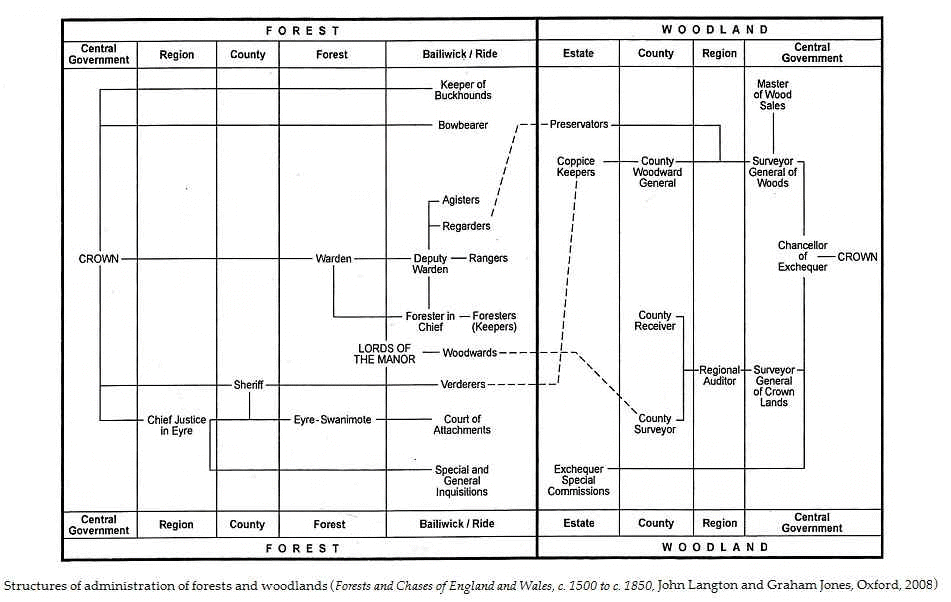The Forest Law
Origins of the Forest System
The pre-Conquest kings of England shared the passion for the chase of their Norman successors. Asser tells us that King Alfred excelled in the art of hunting, and it is believed that Edward the Confessor indulged in the sports of hunting and hawking. Within their demesnes these kings had extensive woods, such as the Confessor’s woods of Chippenham in Wiltshire. There is no evidence that pre-Conquest kings of England claimed exclusive hunting-rights in the woods of their subjects as William I and his successors did. Canute by his legislation claimed hunting rights in his own woods which were much the same as any other landowner – ‘I will that every man be entitled to his hunting in wood and in field, on his own estate. And let every man abstain from my hunting: take notice where I will have it untrespassed upon, under penalty of the full amercement.’ So offences against the game in the king’s woods were to be punished by a fine, according to the ordinary law of the land, and not by a special forest court according to a separate forest law.
William the Conqueror claimed authority over all the land of England by right of conquest, and accordingly the Norman kings imposed an iron rule upon their English subjects. None of William’s innovations was more hated and resented than his introduction of the Norman forest system to his English kingdom. The Anglo-Saxon Chronicle says that the Conqueror ‘established a great peace for the deer, and laid down laws therefor, that whoever should slay hart or hind should be blinded. He forbade the harts and also the boars to be killed. As greatly did he love the tall deer as if he were their father. He also ordained concerning the hares, that they should go free. His great men bewailed it, and the poor murmured thereat, but he was so obdurate, that he recked not of the hatred of them all, but they must wholly follow the King’s will, if they would live, or have land, or even his peace.’ The most infamous of William I’s creations was the New Forest in the south-western corner of Hampshire, which was unique as holdings in and around it formed a separate section of Domesday Book. As a result, hundreds of families were evicted from thinly populated areas in south-west Hampshire. Other royal forests, though not mentioned by name in Domesday, had clearly been established by the time of the Survey.
The Norman kings imposed the forest system upon appropriate districts of England by the use of impulsive decrees. Within the bounds of the royal forests a comprehensive body of laws was developed to protect the hunting rights of the Crown. The four beasts of the English forest were the red deer, the fallow deer, and the roe and the wild boar, together called ‘the venison’; lesser beasts such as hares and rabbits, wildfowl and birds used in falconry, and fish in the ‘forbidden rivers’, were also protected. The forest inhabitants were forbidden to possess bows and arrows or any other means of taking the game, and their dogs must be ‘lawed’ (i.e., their claws cut) so that they were unable to run in pursuit of the wild beasts. The ‘vert ‘ – the trees and other forms of vegetation which gave food and shelter for the game – was also preserved by numerous and oppressive regulations, which forbade the people to clear and cultivate waste land, restricted their rights of cutting wood for building and fuel, and of pasturing their animals on the wastes, and even made it an offence to enclose their crops against the deer. Areas within the forest and outside were designated as Parks, Hays, Warrens and Chases. (1)
The Forest laws were administered by a complex hierarchy of forest officials-Chief Justices of the Forests, Wardens, foresters of fee and a host of subordinate foresters who performed the duties of gamekeepers. (2) These professional forest officers were assisted by the verderers, regarders and agisters, who were elected in the county court from among the knights of the locality. (3) There was also an elaborate system of forest assemblies and courts – swanimotes, attachment courts, forest inquests and the triennial inquiry known as the regard, leading up to the Forest Eyre, which in the twelfth and thirteenth centuries was a slow and laborious judicial and fiscal engine. (4) The main feature of the English royal forest was the existence within its boundaries, side by side with the common law, of a distinct legal system enforced by its own courts and officers, and designed to preserve the vert and venison for the king’s pleasure and profit, not only in the royal demesne, but also in extensive areas beyond it. This system was created and maintained by the whim of the king in the face of hostility by his subjects, who considered it an interference with their liberties.
William II, Henry I, Stephen and Matilda
The Forests Following the Restoration
This section contains information found in The Royal Forests of England, Raymond Grant, Gloucestershire, 1991; Forests and Chases of England and Wales c. 1500 to c. 1850, John Langton and Graham Jones, Oxford, 2008; A History of the British Nation from the Earliest Times to the Present Day, A.D. Innes, London, 1912; New Forest National Park Authority, Lymington, Hampshire.
